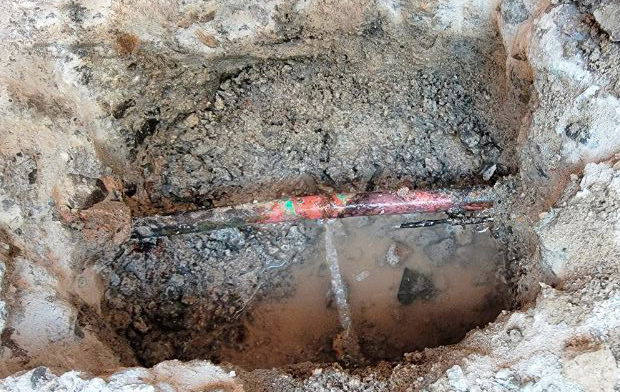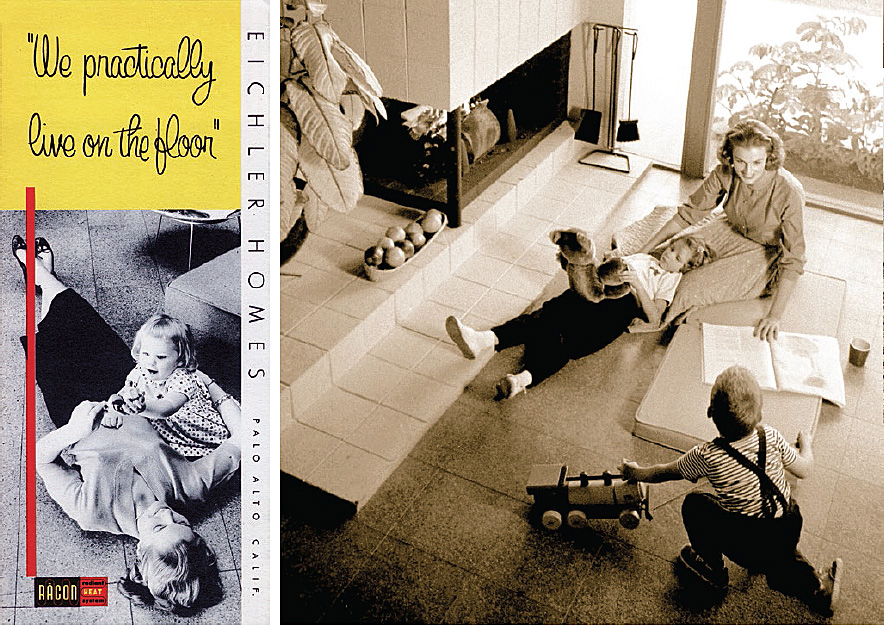Joint of No Return
 |
|
|
A beloved part of the mid-century Eichler lifestyle, Joe Eichler's original radiant heating system has long been one of the most pleasurable creature comforts inherent in owning one of his homes.
Eichler residents have been known to invite guests inside to take off their shoes and experience firsthand the wonders of radiant heat.
Who can blame them? This enjoyable, toasty feature is worthy of bragging rights. After all, what other kind of house lets us step barefoot from the shower onto an evenly warmed bathroom floor?
But Eichler's surviving original radiant heating systems are facing a major crossroads today. Though many are alive and operating trouble-free—or have been revived with successful repairs, system additives, and new boilers—others are on the edge, having become both "a blessing and a curse," as the saying goes.
 |
|
|
To develop a practical approach to preserving these original systems, while at the same time considering the current challenges and complex realities surrounding them, we invited six Bay Area Eichler Network radiant heating and leak detection experts to join us for a deep dive.
We wondered: As these mid-20th century radiant survivors hit the 50- to 75-year mark, are they beginning to 'age-out'? Do seven decades of use go beyond a system's expected lifetime?
"I think the longevity of Eichler radiant systems is going to continue for a long time," says an optimistic Mike LaChance of LaChance's Radiant Heating, who has been servicing the Peninsula and in the South Bay for 20 years. "Catastrophic failures that lead to abandoning systems are rare for us."
 |
|
|
Today, thanks to their current condition and modern repair techniques, most copper pipes that leak are repairable. But, as even LaChance would agree, if your tubing is steel, the first sign of a leak could forecast the eventual end of your system's useful life.
In Joe Eichler's building timeline, from 1950 on, his earliest homes featured radiant heat with copper piping, but in the midst of a copper shortage during the Korean War, by late 1951 he switched to steel and continued for several years.
In the late 1950s, Eichler began to transition back to copper, leaving behind several thousand steel systems with uncertain futures and a trail of corrosion and litigation.
 |
|
|
INVESTIGATION BEGINS
Knowing whether an Eichler owner's piping is comprised of copper or steel is a key piece of information in troubleshooting leaking systems.
To determine that, Jim Lehmann of Lehmann Radiant Heating, who heads up the family-owned company that has been serving Marin County since 1945, recommends looking for the system's 'manifold,' which is a hub that distributes hot supply water from the boiler through the system's pipeline. It is commonly located near the boiler, and usually in the laundry room, garage, or hallway.
"Different manifolds were used on copper and steel [systems]," says Lehmann, who suggests that, to identify copper piping today, homeowners should look for copper-colored exposed pipes at the base of the manifold, and green-colored ones for steel. In his service area, LaChance has also found gray- and aluminum-colored steel piping.
Lance Eastman, owner of Bay Area Plumbing & Heating on the Peninsula and South Bay, takes this probe one step further. "If a magnet sticks to the [metal of the] manifold, you'll know it's steel—and we won't even go out [to make a repair]. With multiple [steel] repairs, as soon as you drive away, it starts leaking again."
But how can homeowners determine that they have a leak? Symptoms can range from higher-than-normal water bills, cracks in flooring or nearby walls, a hot spot on the floor, the sound of running water when all the water in the home is turned off, and puddles and mildew under carpets.
Another telltale sign is the appearance of a powdery efflorescence, usually white in color, on the exterior of the home, along the base of the foundation.




